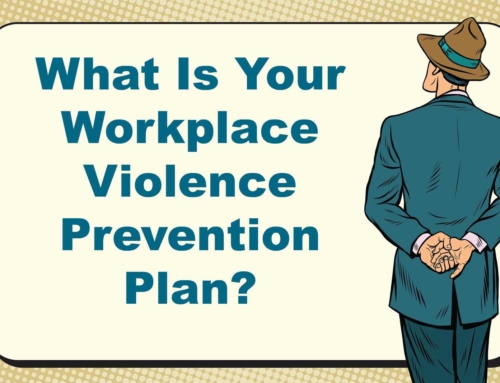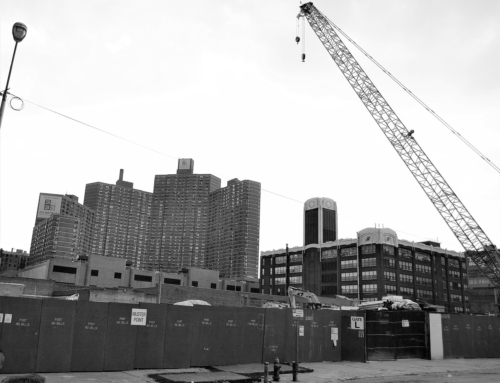Should Employers Be Responsible for Employee Workplace Safety?
In Canada, Ontario was the last province to initiate upgraded Occupational Health & Safety legislation requiring employers to further protect workers from acts of aggression and violence while at work. Bill 168 became law in 2010 and was called “Lori’s Law” after Lori Dupont, a nurse who was stabbed to death by her ex-boyfriend in front of patients while she was at work in a Windsor, Ontario hospital. The assailant was a doctor who still worked at the hospital, who later committed suicide.
Risk Assessments
Within the legislation, a great deal of emphasis is placed on conducting Risk Assessments within workplaces. I have spoken about this before with respect to Risk Assessments based on information that is known or ought reasonably to have been known.
Conducting a risk analysis regarding a workplace is a time-honoured technique used to identify factors that may complicate or inhibit success in creating a safe workplace for your staff.
Reduced to its essence, a risk analysis necessitates examining a workplace and making of list of everything that could go wrong in a given worksite situation. It also necessitates coming up with best possible responses on how to deal effectively with each scenario.
The important thing is that this is done proactively……before anything actually occurs
When you look around your workplace, risks are everywhere. Especially if your staff work in an atmosphere where they deal with the public on a daily basis.Employers are required to examine different levels of risk. These are based on the level of potential violence and exposure to danger in a situation and the urgency of the response required to that situation.
Think through a risk exercise
I have found that when you engage in the activity of thinking through a risk exercise, it tends to open up new perspectives on where the risks are in a given workplace and what the potential responses might be. It also allows you to think about all of the potential steps that could be taken to mitigate such risks ahead of time.
In the aftermath of an incident, an investigation will always examine the information that was known (or ought reasonably to have been known) to see whether an employer knew the risks but failed to take any steps to protect its workers.
With respect to Lori’s Law, had the hospital (the employer) known about the abusive relationship that Lori was suffering at the hands of her boyfriend (a co-worker), they would have acted to protect, not only Lori, but also other workers at the hospital since everyone else was at risk as well.
Certainly in healthcare settings, where there are constant high-tension and high-traffic environments to manage, the risk analysis process focuses on the risks that are confronting staff safety every day.
As with other workers who work with the public, staff in healthcare settings could experience violence and aggression not only from their co-workers and supervisors but also from patients and visitors. All of these factors must be taken into account when conducting that risk assessment.
Some factors to consider in those risk assessment conversations should include:
Potential weapons that could be present (possessed by patients, their families or friends)
Onsite investigations involving the police and criminal containment at the facility
Violent individuals who are detained in the healthcare facility
Mentally ill individuals who have been released following their assessment but without sufficient medical care
Drugs that are available in healthcare facilities, making the facility a target
Open access waiting areas which are unsecured and where there is zero screening
Dangerous individuals who may be there to obtain information regarding a patient or to visit a patient
Reduced staffing levels during various times of the day
Isolated work locations when staff are treating or examining patients
Remote locations where there is a lack of backup or immediate assistance
Lack of training regarding the recognition of escalating aggression and how to manage the hostile individual and de-escalation techniques
Security features which examine physical barriers, interior and exterior lighting and physical alarm devices amongst many other items
Etc….
Why this is a relevant conversation to have now is that in Ontario there is the first courtroom test of “Lori’s Law” where an Ottawa justice of the peace must now decide if the Royal Ottawa Hospital did enough to protect its workers involved in a violent Code White call nearly four years ago.
The July 5, 2012, incident occurred in The Royal Ottawa Hospital’s recovery unit where low-risk patients are prepared to re-enter the community. That day, a schizophrenic man, became agitated and attacked staff, knocking one out by throwing her against a steel door frame and choking another to unconsciousness. He was eventually overpowered and subdued by another patient who intervened in the melee.
Code White is hospital name for alerting staff to violent incidents.
Over the course of the trial, court heard graphic testimony from nurses, registered practical nurses and personal care attendants about the patient’s violent assault. Much of the other testimony involved the hospital’s training and policies, and the equipment available to summon help during a Code White event.
The hospital made changes in the recovery unit after the assault — installing shatter-proof windows, adding red help phones and issuing staff personal alarms, for example — and those improvements “could have been done and should have been done beforehand,” said Grainne McGrath, the Ministry of Labour prosecuting lawyer.
“The employer should have done better.”
That is my point here.
Employers need to be proactive before they have to be reactive.
If convicted, The Royal faces fines of up to $500,000 on each charge.
The verdict is due June 17.
Based on this information……how does your workplace measure up?







Leave A Comment